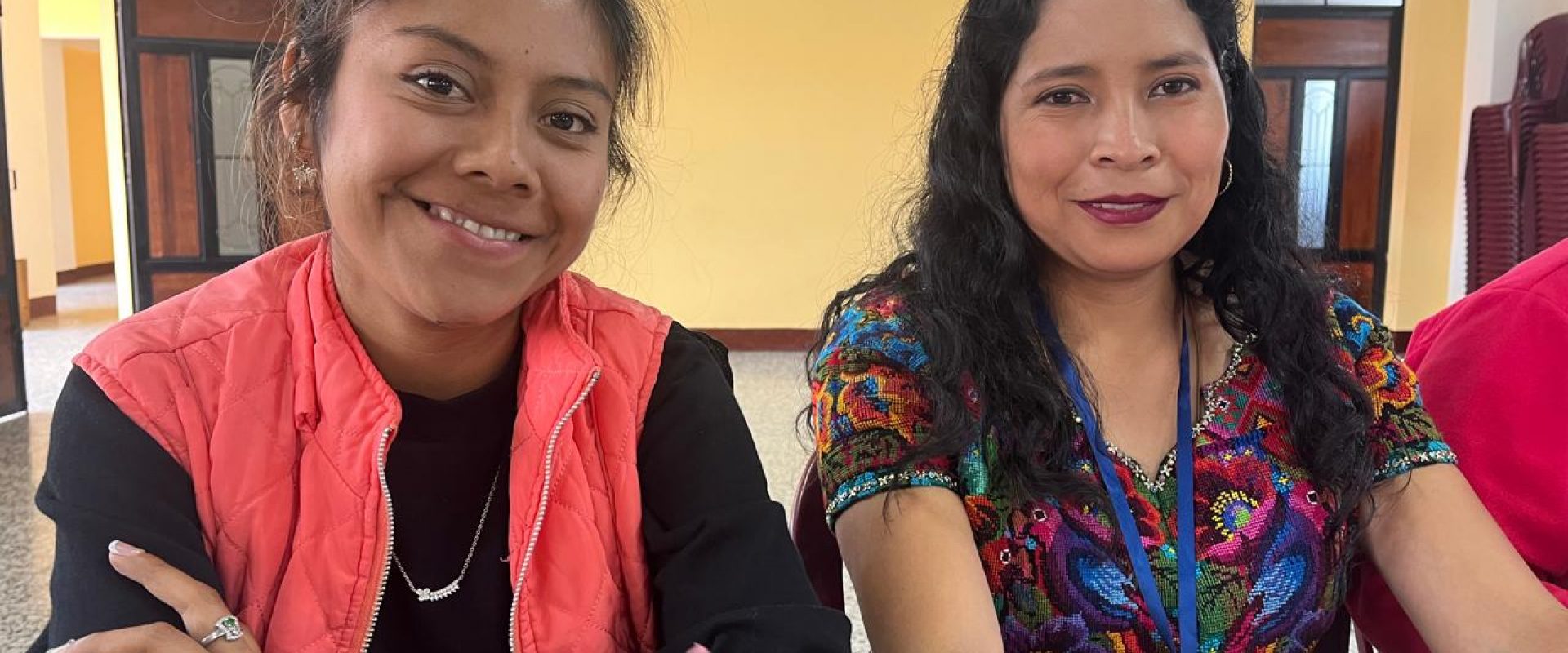
Tomasa Pérez remembers what it felt like to be left behind.
As a child in rural Guatemala, she didn’t speak Spanish—her mother language was K’iche’. In the classroom, she couldn’t understand what the teacher was saying. “¡Cómo me regañaban!” she recalls. How they would scold me! She was punished for something that wasn’t her fault: a mismatch between how she learned and how she was being taught.
Today, Tomasa is a tutor in School the World’s Tutoring Program. And she’s making sure no child experiences what she did.
In primary schools across Guatemala, Honduras, and Panama, many students fall behind in foundational literacy and numeracy. Some, like Tomasa, face additional barriers—language gaps, cultural disconnection, or previous negative experiences with traditional classroom teaching. By the time students reach critical transitions like 3rd grade (a pivotal moment in early literacy development) or 6th grade (the final year of primary school), some have already begun to disengage or drop out entirely.
This is more than learning loss. It’s a kind of disconnection—and often, discouragement—that can last for years.
Students internalize the message that they can’t learn, that they’re too slow, that there’s something wrong with them. Teachers, working with large class sizes and limited resources, struggle to meet individual needs. The system moves forward regardless of who gets left behind.
School the World launched its Tutoring Program as an evidence-based intervention grounded in Teaching at the Right Level (TaRL)—a methodology that identifies each student’s actual skill level and groups them for targeted instruction. But here’s what makes this program different: the tutors aren’t external experts. They’re locally trained educators—university students and graduates—who understand both the academic content and the community’s linguistic and cultural context.
School the World selects and trains these tutors through rigorous workshops grounded in child-centered practices and ongoing support.
They’re people like Tomasa and Josué Ajcot, a third-year tutor from Cunén.
When Tomasa started as a tutor, everything changed. She learned TaRL methodology and discovered teaching techniques completely different from the pressure-based approach she’d experienced as a student.
“I wish that as a girl, I had received support like what this program provides,” she says. Now she does something remarkable: she tutors in K’iche’ and Spanish, facilitating learning in students’ mother language. With her students, she uses games, drawings, posters, and colorful materials—all provided by the program. For math, she might use fruit drawings to reinforce numbers 1 through 10. Children paint, they play, they learn.
“This way of teaching is a great opportunity for children to learn at their own pace, without pressure and comfortably,” Tomasa explains. “Each child learns differently. The change you see in their faces when they can read—it’s impressive.”
What strikes her most is the training itself. “I’ve received other trainings, but none like this one. This IS a real training!” The program guides tutors as a group, helping them do work that’s effective and successful. “We are entrepreneurs of education,” she says proudly.
Josué has been a tutor for three years, working with students in 2nd through 5th grade. He’s seen firsthand how the TaRL approach transforms student engagement and achievement.
One of his most effective techniques is having students read in pairs. He tells them: “It’s not a competition! It’s about improving ourselves, reading faster and understanding what we’re reading.” They work with cards, stories, and drawings. Students enjoy it. The results speak for themselves.
But what Josué emphasizes most is something deeper: “Each child is different. Each one learns at their own pace—and we shouldn’t pressure or shame them.”
This is the opposite of traditional schooling. Students aren’t compared to their peers. They’re not made to feel inadequate. Instead, they’re met where they are and supported to move forward at a pace that works for them. Josué has received trainings from other organizations, but these are different. “These STW trainings mark the difference for better education and learning,” he says. “They’ve convinced us that it really is possible.”
When you train local tutors, you don’t just improve student outcomes. You create leaders within the community who embody a different vision of what education can be. Tutors like Tomasa and Josué become proof that learning loss can be recovered, that children can thrive when taught at the right level, and that a child’s previous struggles don’t define their future.
They become living refutations of the systems that failed them.
Students in the program learn that they’re capable. They experience what it feels like to be taught in their language, at their pace, with patience and creativity. Teachers see that small-group targeted instruction works. Communities see their young people—university students and graduates—taking leadership roles in education.
The cycle breaks.
Learning loss has been compounded by pandemic disruptions, economic challenges, and systemic inequities. Many students have internalized the belief that they can’t learn. They need more than curriculum recovery. They need to experience what Tomasa experienced when she became a tutor: the realization that there was never anything wrong with them. The system just wasn’t built for how they learn.
The Tutoring Program, grounded in TaRL and led by locally trained tutors, offers exactly that. It says to struggling students: you’re not behind. You’re learning at the right level. And we believe in you.
For tutors like Tomasa and Josué, it offers something equally profound: the chance to give to others what they wish they’d received themselves.
That’s how you break cycles. That’s how you recover learning loss. That’s how you transform education.
From classrooms to communities, this is education that transforms.